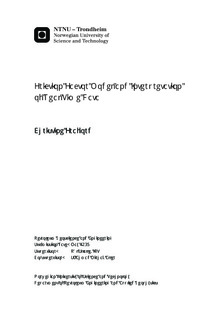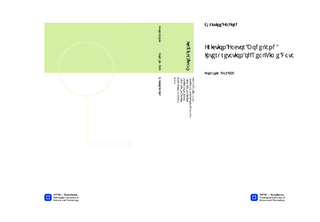| dc.contributor.advisor | Skalle, Pål | nb_NO |
| dc.contributor.advisor | Mirhaj, S. Ahmad | nb_NO |
| dc.contributor.author | Frafjord, Christine | nb_NO |
| dc.date.accessioned | 2014-12-19T12:17:02Z | |
| dc.date.available | 2014-12-19T12:17:02Z | |
| dc.date.created | 2013-08-29 | nb_NO |
| dc.date.issued | 2013 | nb_NO |
| dc.identifier | 644168 | nb_NO |
| dc.identifier | ntnudaim:9664 | nb_NO |
| dc.identifier.uri | http://hdl.handle.net/11250/240001 | |
| dc.description.abstract | The interest in torque and drag issues has over the last years increased when the complexity of wells drilled has become higher. The petroleum industry continually expands the extended reach drilling envelope, which forces the industry to find new methods and tools to better interpret friction because of the central role it has in achieving successful wells. The importance of model friction is further elaborated in chapter 2.Present report contains an investigation of the theory in Aadnoy`s friction model in terms of possibilities and limitations. The theory has been used as foundation to build an Excel calculation tool to model friction. To study the model, three field cases have been applied with the friction model. Excel program which is applied in this work can be provided by the author of the present report to readers if requested.Even though the limitations listed in chapter 6 do exist, the model has been shown to be applicable to get an indication on the downhole situation. By comparing the result from two different well sections in the same well, it was possible to evaluate high borehole friction because of hole cleaning issues. However, one important issue detected during present work, is that the modeled friction factor is highly sensitive to changes in hook load measurements in shallow sections with small inclination and little drillpipe downhole. This is an issue that demands awareness during application of the model because it is a source of risk to get misleading results.For future work, the model should be improved in a more powerful tool than Excel with added features built in to it to reduce constrains in the model, which are mentioned in chapter 6. As continuation of present work the analytical model should also be further investigated by using real wells with more quantitative data and qualitative measured data. | nb_NO |
| dc.language | eng | nb_NO |
| dc.publisher | Institutt for petroleumsteknologi og anvendt geofysikk | nb_NO |
| dc.title | Friction Factor Model and Interpretation of Real Time Data | nb_NO |
| dc.type | Master thesis | nb_NO |
| dc.source.pagenumber | 96 | nb_NO |
| dc.contributor.department | Norges teknisk-naturvitenskapelige universitet, Fakultet for ingeniørvitenskap og teknologi, Institutt for petroleumsteknologi og anvendt geofysikk | nb_NO |

